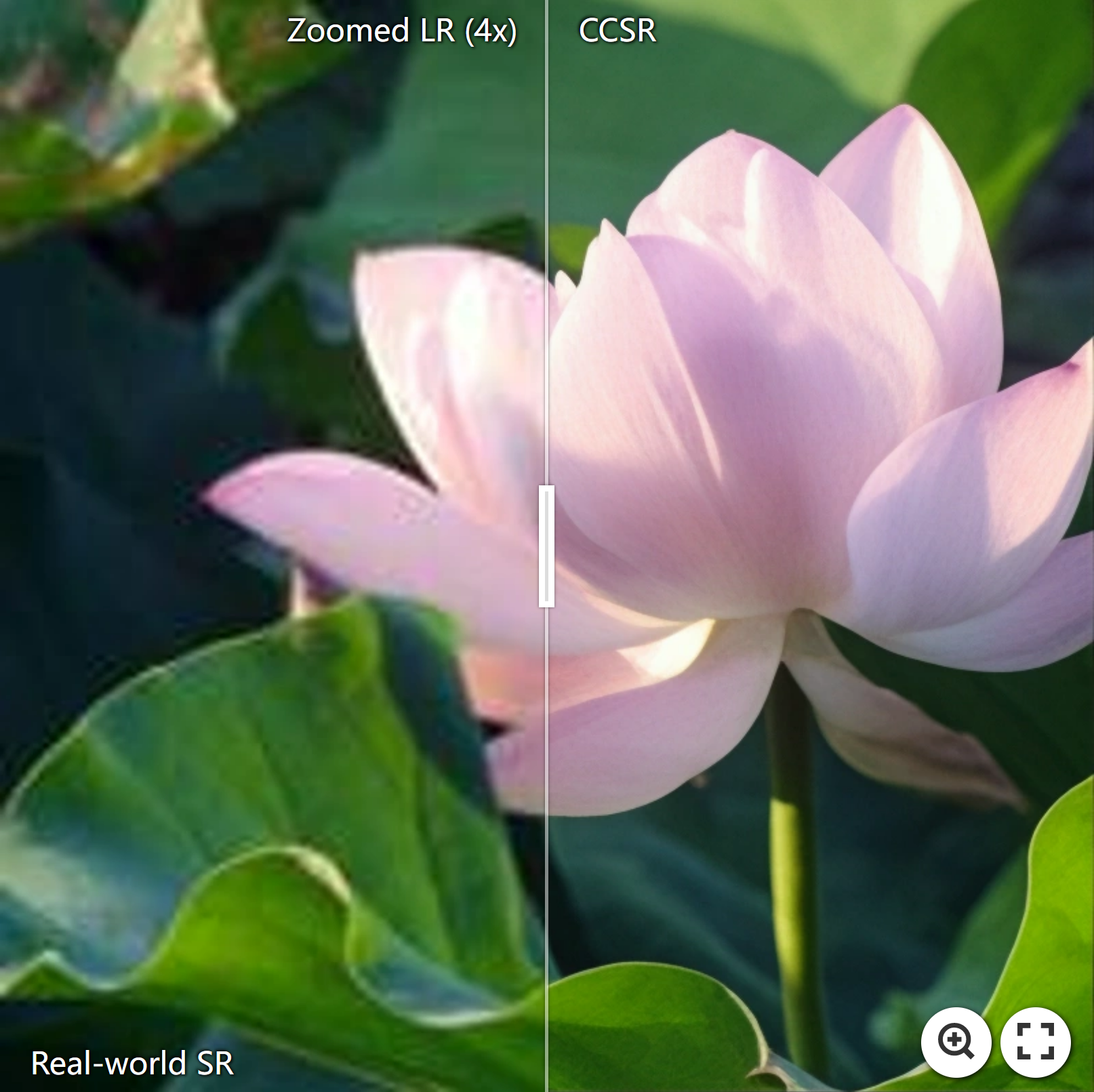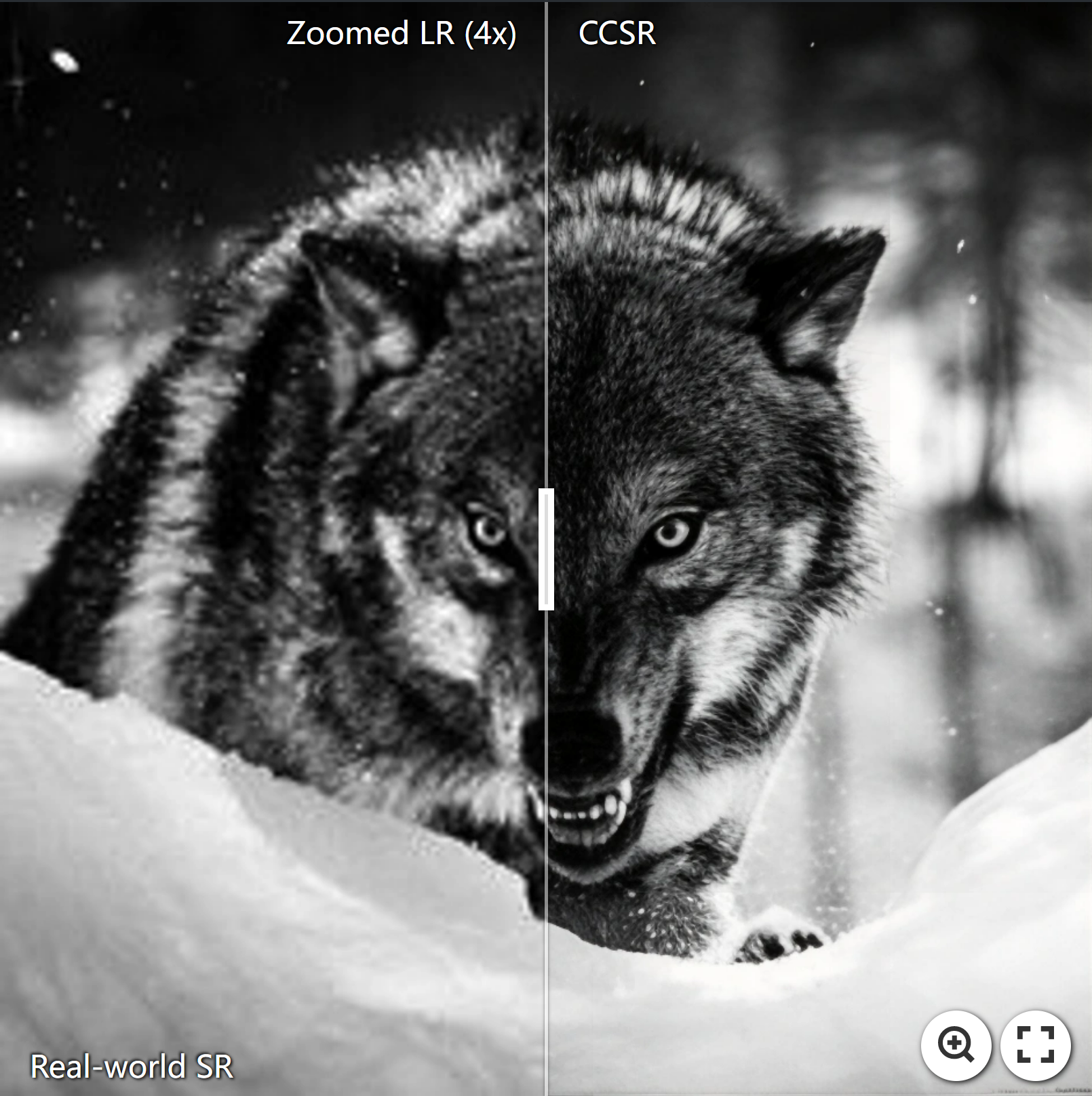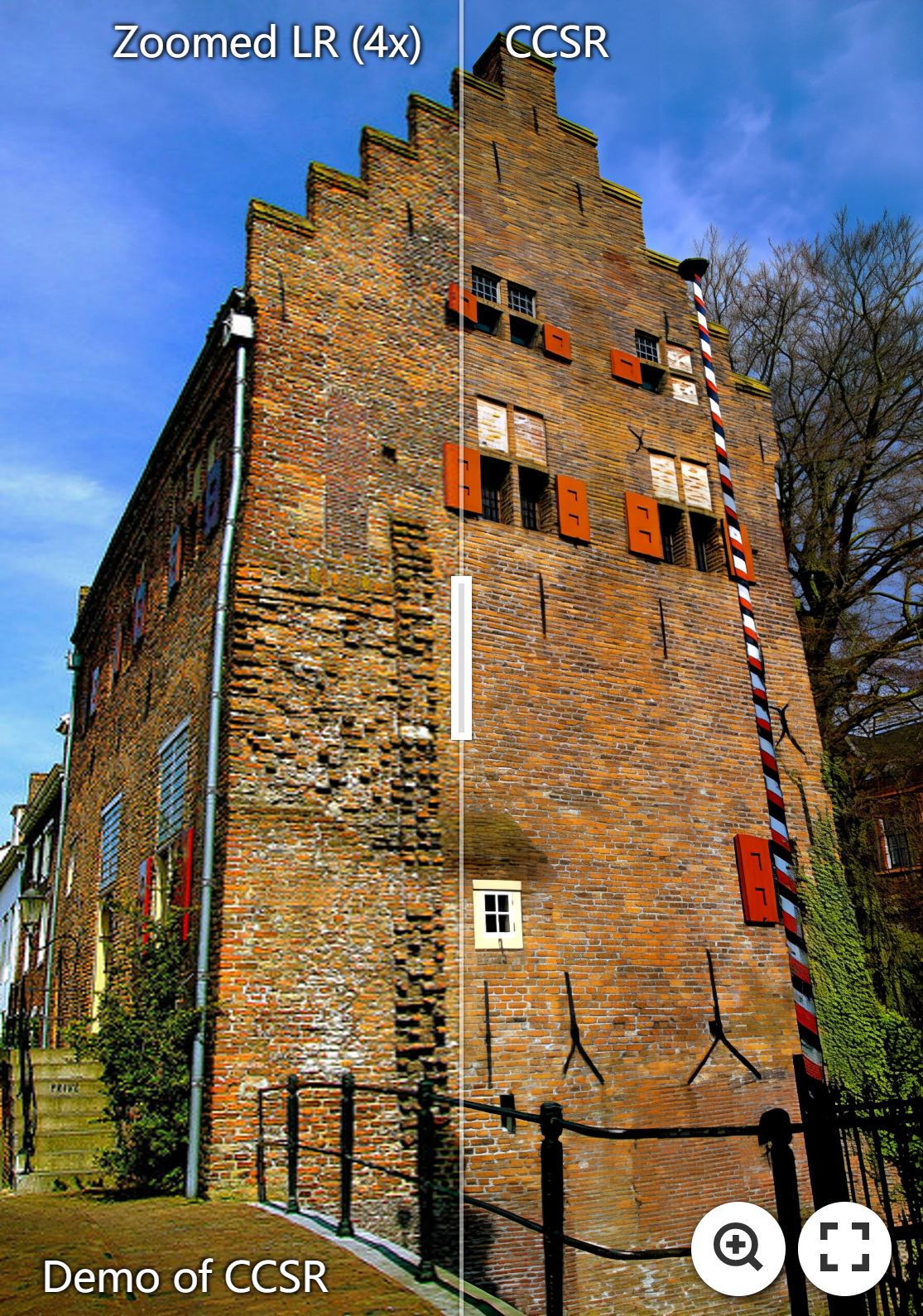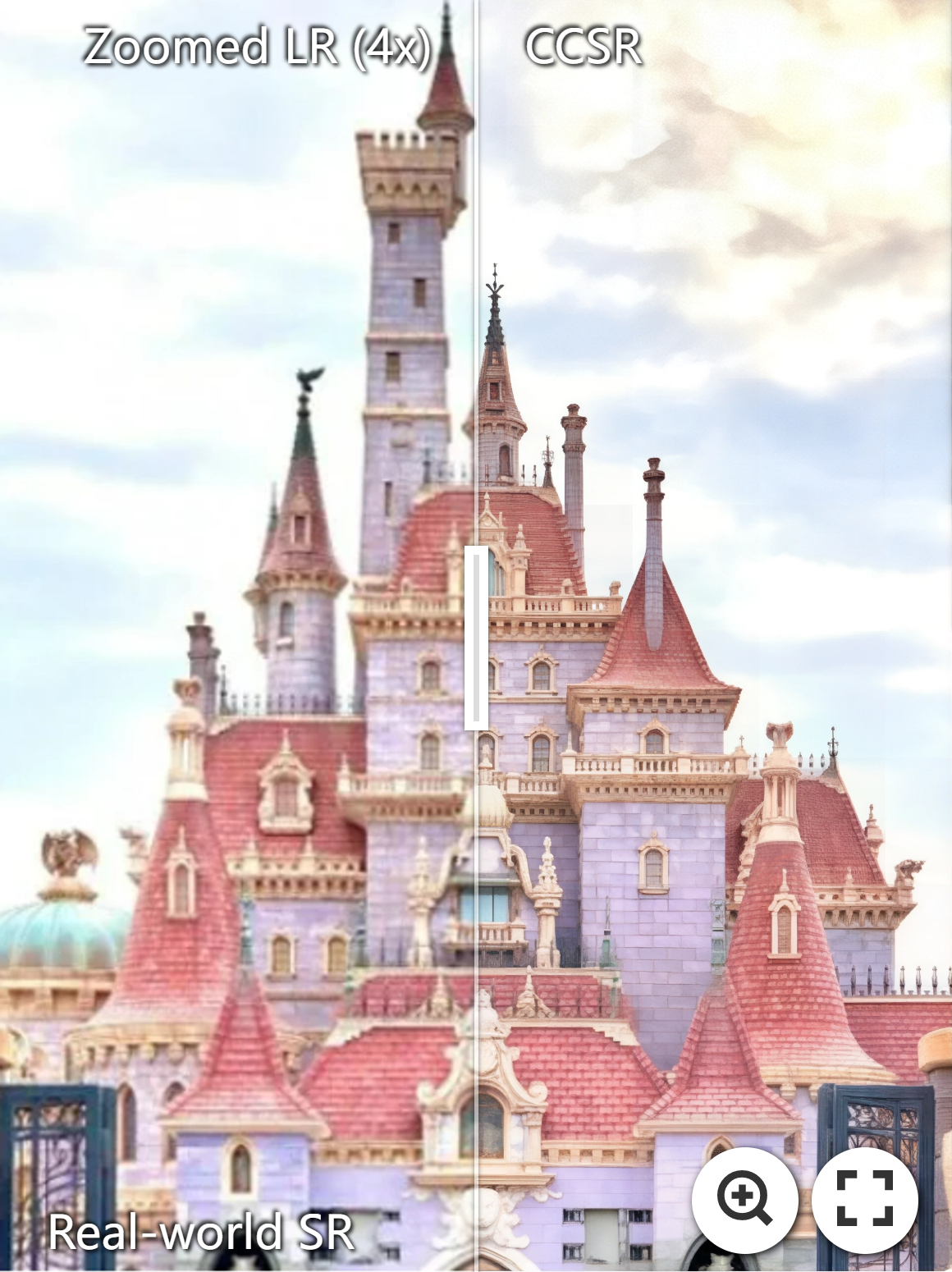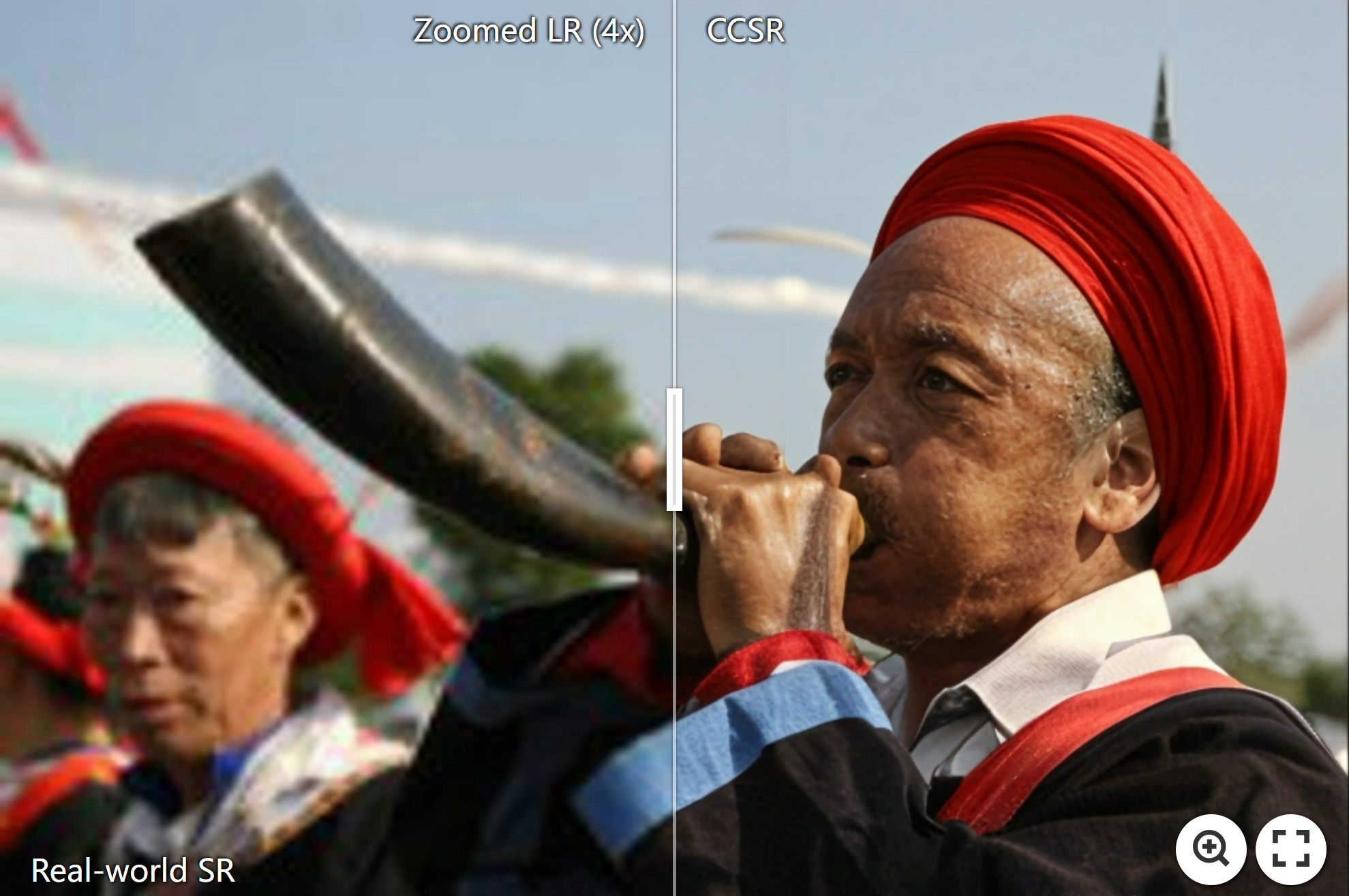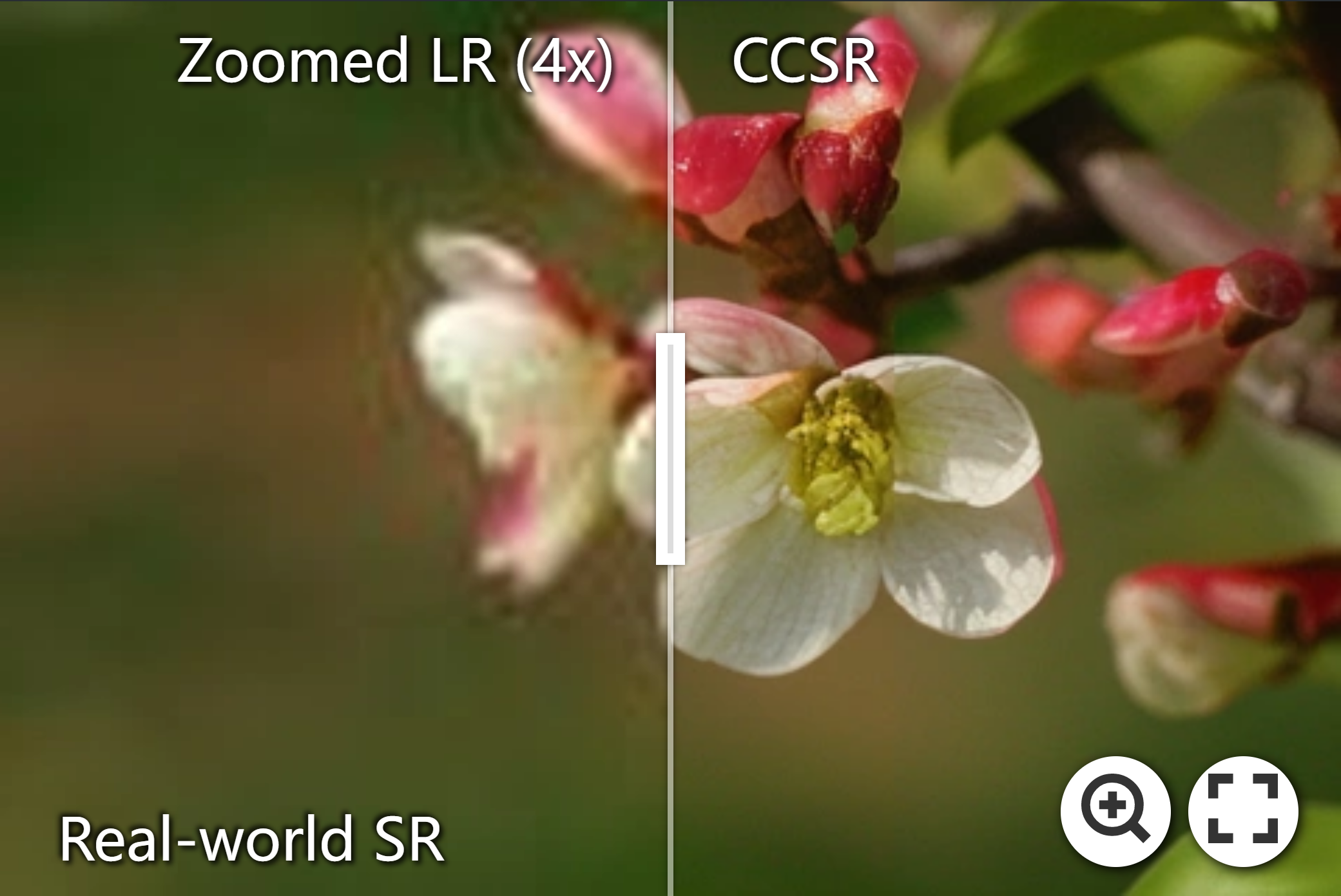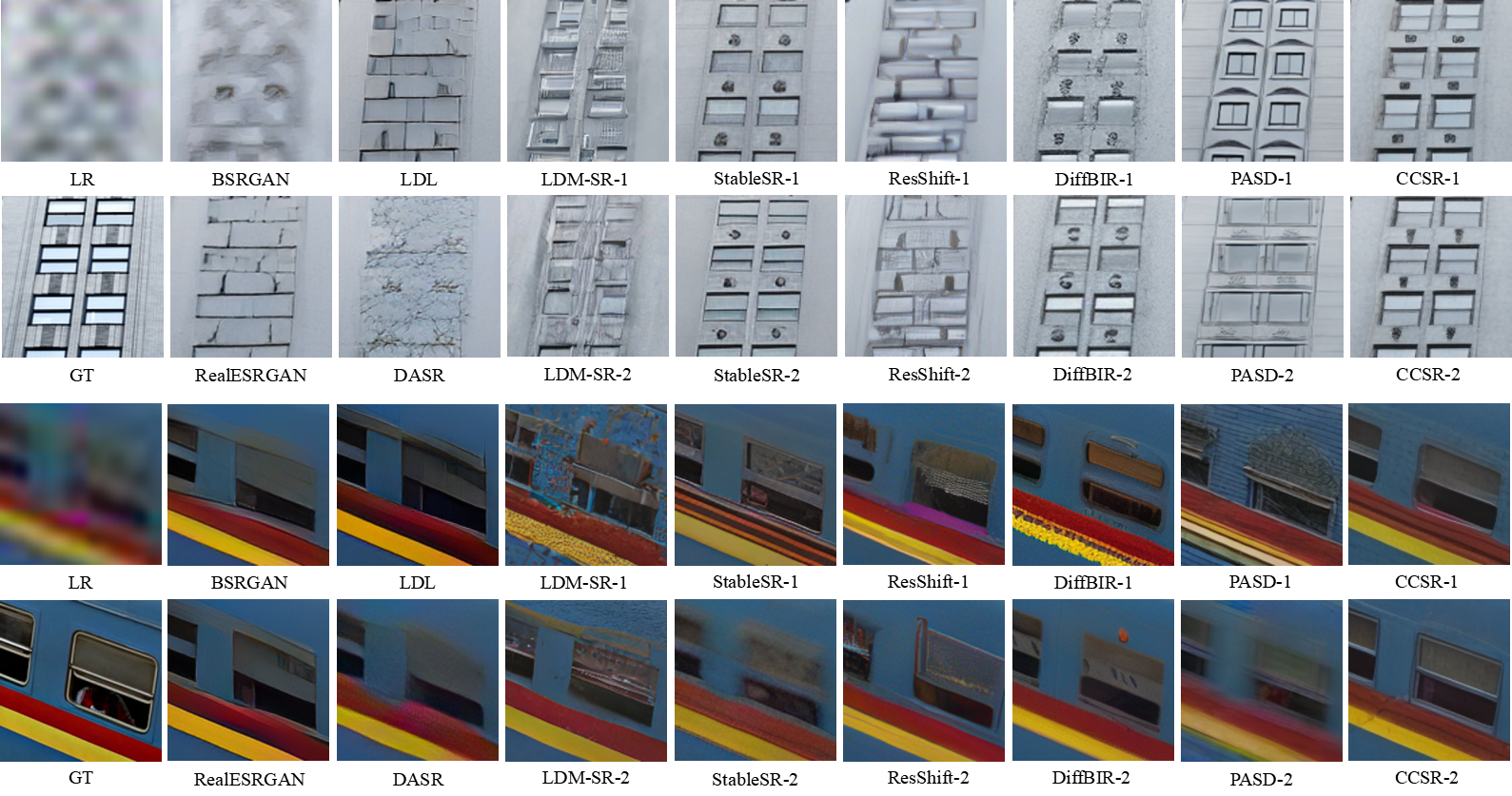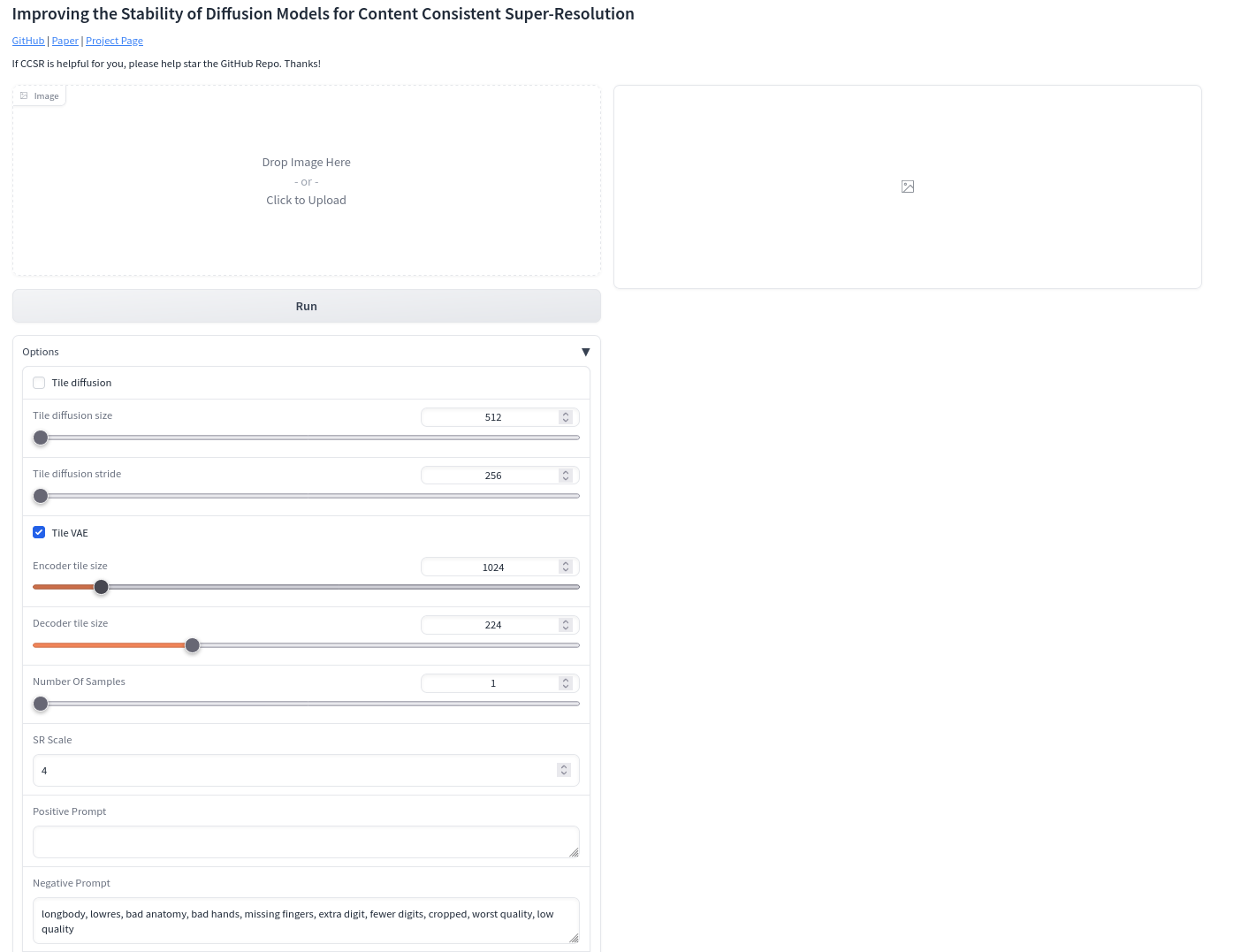Lingchen Sun1,2 | Rongyuan Wu1,2 | Zhengqiang Zhang1,2 | Hongwei Yong1 | Lei Zhang1,2
1The Hong Kong Polytechnic University, 2OPPO Research Institute
- 2024.1.17: Add Replicate demo
.
- 2024.1.16: Add Gradio demo.
- 2024.1.14: Integrate tile_diffusion and tile_vae to the inference_ccsr_tile.py to save the GPU memory for inference.
- 2024.1.10: Update CCSR colab demo. ❤ Thank camenduru for the implementation!
- 2024.1.4: Code and the model for real-world SR are released.
- 2024.1.3: Paper is released.
- 2023.12.23: Repo is released.
⭐ If CCSR is helpful to your images or projects, please help star this repo. Thanks! 🤗
For the diffusion model-based method, two restored images that have the best and worst PSNR values over 10 runs are shown for a more comprehensive and fair comparison.
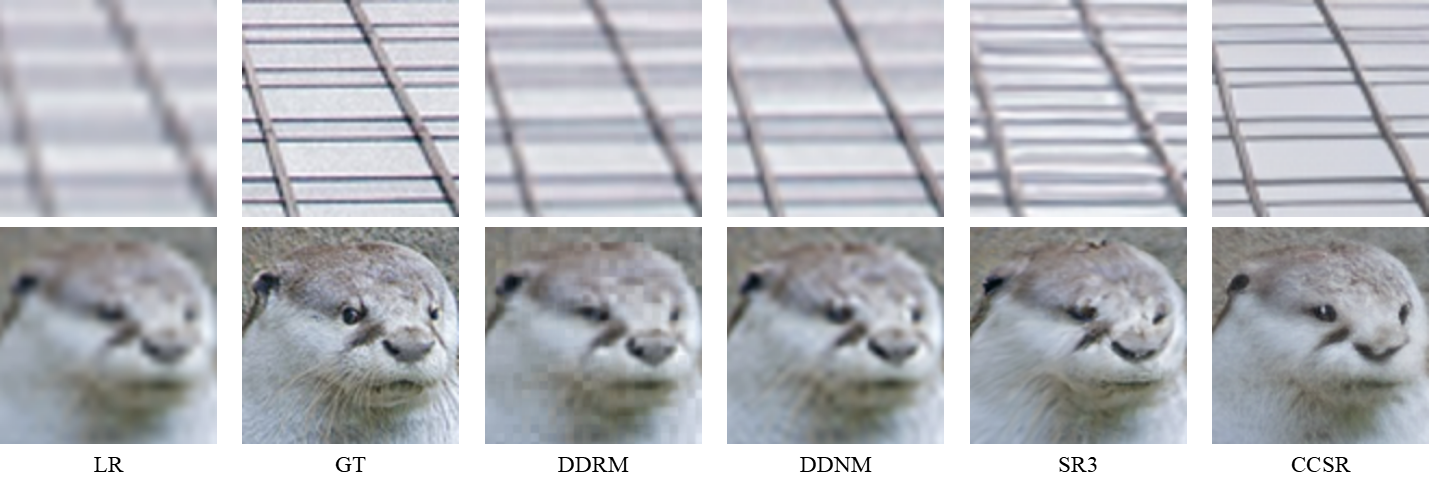 For more comparisons, please refer to our paper for details.
For more comparisons, please refer to our paper for details.
We propose new stability metrics, namely global standard deviation (G-STD) and local standard deviation (L-STD), to respectively measure the image-level and pixel-level variations of the SR results of diffusion-based methods.
More details about G-STD and L-STD can be found in our paper.
## git clone this repository
git clone https://github.com/csslc/CCSR.git
cd CCSR
# create an environment with python >= 3.9
conda create -n ccsr python=3.9
conda activate ccsr
pip install -r requirements.txt
pip install -e git+https://github.com/CompVis/taming-transformers.git@master#egg=taming-transformers- Download the CCSR models from:
| Model Name | Description | GoogleDrive | BaiduNetdisk |
|---|---|---|---|
| real-world_ccsr.ckpt | CCSR model for real-world image restoration. | download | download (pwd: CCSR) |
| bicubic_ccsr.ckpt | CCSR model for bicubic image restoration. | download | download |
You can put the testing images in the preset/test_datasets.
python inference_ccsr.py \
--input preset/test_datasets \
--config configs/model/ccsr_stage2.yaml \
--ckpt weights/real-world_ccsr.ckpt \
--steps 45 \
--sr_scale 4 \
--t_max 0.6667 \
--t_min 0.3333 \
--color_fix_type adain \
--output experiments/test \
--device cuda \
--repeat_times 1
We integrate tile_diffusion and tile_vae to the inference_ccsr_tile.py to save the GPU memory for inference. You can change the tile size and stride according to the VRAM of your device.
python inference_ccsr_tile.py \
--input preset/test_datasets \
--config configs/model/ccsr_stage2.yaml \
--ckpt weights/real-world_ccsr.ckpt \
--steps 45 \
--sr_scale 4 \
--t_max 0.6667 \
--t_min 0.3333 \
--tile_diffusion \
--tile_diffusion_size 512 \
--tile_diffusion_stride 256 \
--tile_vae \
--vae_decoder_tile_size 224 \
--vae_encoder_tile_size 1024 \
--color_fix_type adain \
--output experiments/test \
--device cuda \
--repeat_times 1
You can obtain N different SR results by setting repeat_time as N to test the stability of CCSR. The data folder should be like this:
experiments/test
├── sample0 # the first group of SR results
└── sample1 # the second group of SR results
...
└── sampleN # the N-th group of SR results
Download the model real-world_ccsr.ckpt and put the model to weights/, then run the following command to interact with the gradio website.
python gradio_ccsr.py \
--ckpt weights/real-world_ccsr.ckpt \
--config configs/model/ccsr_stage2.yaml \
--device cuda
-
Calculate the Image Quality Assessment for each restored group.
Fill in the required information in cal_iqa.py and run, then you can obtain the evaluation results in the folder like this:
log_path ├── log_name_npy # save the IQA values of each restored group as the npy files └── log_name.log # log recode -
Calculate the G-STD value for the diffusion-based SR method.
Fill in the required information in iqa_G-STD.py and run, then you can obtain the mean IQA values of N restored groups and G-STD value.
-
Calculate the L-STD value for the diffusion-based SR method.
Fill in the required information in iqa_L-STD.py and run, then you can obtain the L-STD value.
-
Generate file list of training set and validation set.
python scripts/make_file_list.py \ --img_folder [hq_dir_path] \ --val_size [validation_set_size] \ --save_folder [save_dir_path] \ --follow_links
This script will collect all image files in
img_folderand split them into training set and validation set automatically. You will get two file lists insave_folder, each line in a file list contains an absolute path of an image file:save_dir_path ├── train.list # training file list └── val.list # validation file list -
Configure training set and validation set.
For real-world image restoration, fill in the following configuration files with appropriate values.
- training set and validation set for Real-ESRGAN degradation.
-
Download pretrained Stable Diffusion v2.1 to provide generative capabilities.
wget https://huggingface.co/stabilityai/stable-diffusion-2-1-base/resolve/main/v2-1_512-ema-pruned.ckpt --no-check-certificate
-
Create the initial model weights.
python scripts/make_stage2_init_weight.py \ --cldm_config configs/model/ccsr_stage1.yaml \ --sd_weight [sd_v2.1_ckpt_path] \ --output weights/init_weight_ccsr.ckpt
-
Configure training-related information.
Fill in the configuration file of training of stage1 with appropriate settings.
-
Start training.
python train.py --config configs/train_ccsr_stage1.yaml
-
Configure training-related information.
Fill in the configuration file of training of stage2 with appropriate settings.
-
Start training.
python train.py --config configs/train_ccsr_stage2.yaml
If our code helps your research or work, please consider citing our paper. The following are BibTeX references:
@article{sun2023ccsr,
title={Improving the Stability of Diffusion Models for Content Consistent Super-Resolution},
author={Sun, Lingchen and Wu, Rongyuan and Zhang, Zhengqiang and Yong, Hongwei and Zhang, Lei},
journal={arXiv preprint arXiv:2401.00877},
year={2024}
}
This project is released under the Apache 2.0 license.
This project is based on ControlNet, BasicSR and DiffBIR. Some codes are brought from StableSR. Thanks for their awesome works.
If you have any questions, please contact: ling-chen.sun@connect.polyu.hk





